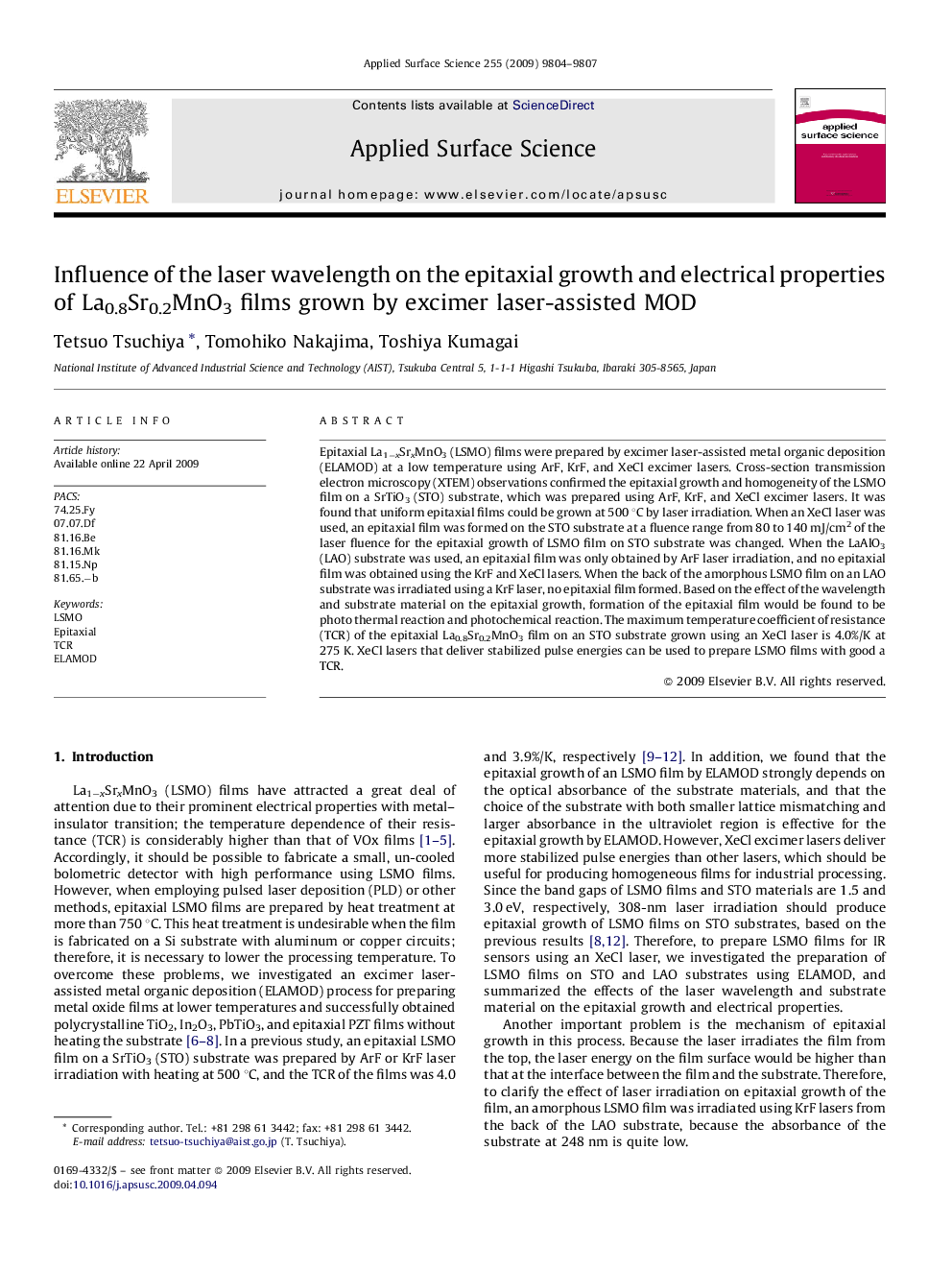| Article ID | Journal | Published Year | Pages | File Type |
|---|---|---|---|---|
| 5361661 | Applied Surface Science | 2009 | 4 Pages |
Abstract
Epitaxial La1âxSrxMnO3 (LSMO) films were prepared by excimer laser-assisted metal organic deposition (ELAMOD) at a low temperature using ArF, KrF, and XeCl excimer lasers. Cross-section transmission electron microscopy (XTEM) observations confirmed the epitaxial growth and homogeneity of the LSMO film on a SrTiO3 (STO) substrate, which was prepared using ArF, KrF, and XeCl excimer lasers. It was found that uniform epitaxial films could be grown at 500 °C by laser irradiation. When an XeCl laser was used, an epitaxial film was formed on the STO substrate at a fluence range from 80 to 140 mJ/cm2 of the laser fluence for the epitaxial growth of LSMO film on STO substrate was changed. When the LaAlO3 (LAO) substrate was used, an epitaxial film was only obtained by ArF laser irradiation, and no epitaxial film was obtained using the KrF and XeCl lasers. When the back of the amorphous LSMO film on an LAO substrate was irradiated using a KrF laser, no epitaxial film formed. Based on the effect of the wavelength and substrate material on the epitaxial growth, formation of the epitaxial film would be found to be photo thermal reaction and photochemical reaction. The maximum temperature coefficient of resistance (TCR) of the epitaxial La0.8Sr0.2MnO3 film on an STO substrate grown using an XeCl laser is 4.0%/K at 275 K. XeCl lasers that deliver stabilized pulse energies can be used to prepare LSMO films with good a TCR.
Related Topics
Physical Sciences and Engineering
Chemistry
Physical and Theoretical Chemistry
Authors
Tetsuo Tsuchiya, Tomohiko Nakajima, Toshiya Kumagai,
